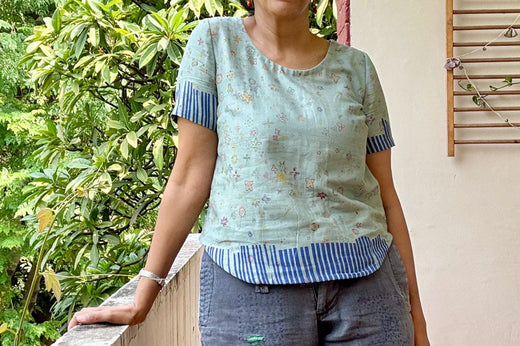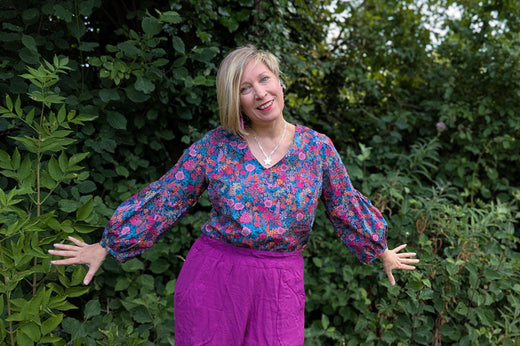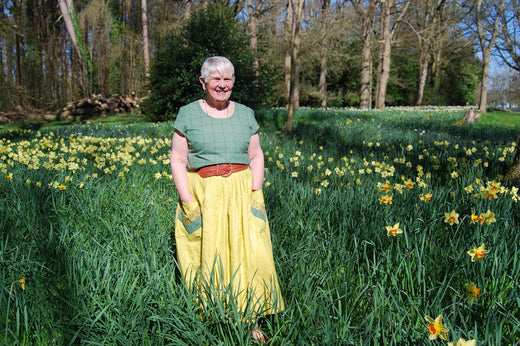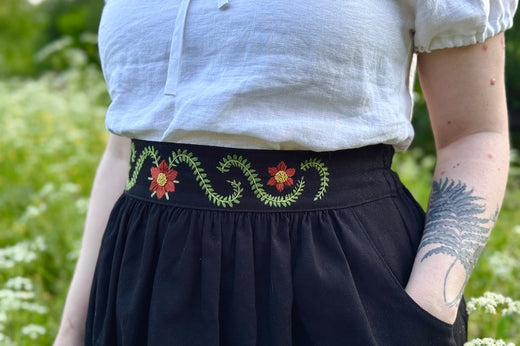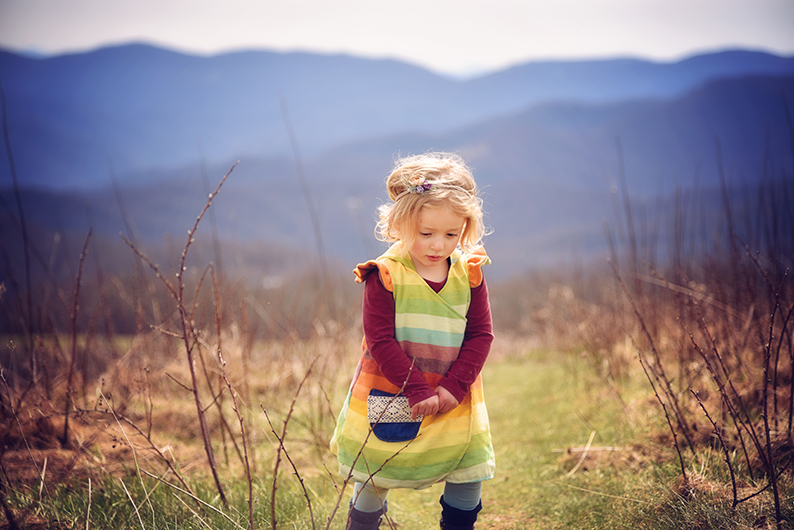"Madame! You look stunning. But you know, you shouldn’t go out like that!” Cécile raised her head even a bit higher than before. It was not her ladies' maid who would tell her what to do or what not. She was the master of her fate and would go out however it pleased her. Of course, everybody knew that in theory “Indiennes” were forbidden. But then also, everybody was wearing them – even her mother. And what good was it that they had married her to a wealthy cloth trader if she could not at least show off his pieces.
“Don’t worry, Jeanette. Everybody wears Indiennes and it will be good for Antoine’s business if people see me in my new beautiful robe à l’anglaise. It’s the latest fashion in Versailles. And if the police arrest me – it will be my little adventure.” With a laugh, she swiped away the servant’s concern and went out.

In this little scene, we are in France 1750 - and if young Cécile goes out in a dress made in brightly printed cotton, she defies the law. Indiennes are at this point forbidden in France and they have been for almost 100 years. For her, the young wife of a wealthy man, it may indeed just be a little adventure to go out in the forbidden fabric and in case of an arrest, a fee would do the trick. But it was not the same for many persons during the long period when the prohibition of cotton was law in France. Importers could be sent to the colonies or the galleys. Yet, everybody wanted to wear them.
This is not the only example of an outfit that was seen as defiant. Pants for women were forbidden in many places and for a long time. For most of human history, laws regulated who could wear what. Clothes could become political messages: the suffragettes wore white or purple. If you showed it on the streets, you took a risk: you were truly "showing your colours". Dictators tend to favor uniforms. Refusing to wear a uniform, refusing conformity, shortening or lengthening your skirts: it all could be a risk on the streets. And it can still be one.
If wearing clothes can be an adventure, what about making them?
When confronted with the task to write about adventure, a lot of thoughts went through my mind. What makes an adventure? And why has sewing become mine?
I often think that when today, people speak of adventures, they think of physical adventures. Adventure parks are for climbing, an adventure trip implies rafting or kitesurfing - and yet it seems to me that in narrowing down adventure to some form of thrill and physical effort, the essential part of its appeal is lost: the unknown. Cécile did not exactly know what would happen to her, if she went out in a forbidden gown, and the first woman in trousers did not know that they would set in motion a reform that changed the way women dress in huge parts of the world. The suffragettes did not know that more than 100 years later, their white suits could still be a political message.
When you thread your needle and your foot touches your sewing pedal, you don't know exactly how your garment will turn out. You take a risk - a different risk, but still a risk: the risk to ruin a beautiful fabric, the risk to spend the entire night sewing (who of us have never done this?), the risk to disappoint the person for whom you sew. And like true adventurers, we judge the risks worthwhile: worth the pleasure, worth the outcome, worth both, depending on what we make.
Amelia Earhart, the aviator, is reported to have said: "Adventure is worthwhile in itself." That sentence has grown on me. It is worthwhile to explore the limits around yourself and your own limits - be it in climbing, dancing or sewing. It is worthwhile to take a risk and to show what you care about. It is worthwhile to fail. It is worthwhile to sew.

The look I sewed, inspired by all those thoughts, contains multiple elements: a white suit, to remember the suffragettes - this was dear to me in Switzerland, where women's right to vote was only granted in 1971. Pants - but close to skirts - to remember the transition towards freedom to wear them if you want. A blouse in an Indian printed cotton - to remember a time when they were forbidden and the adventure of wearing them was more than a fashion thrill.
Three patterns, one sewn for the first time - the Scenic Top; one for the second - the Grove Coat, but with variations; and the last one - the Fernway Culotte, which is a classic for me now. This is also part of the adventure of sewing: try something new, like a new pattern, a new fabric, a new technique, vary something you already know. And sometimes, in sewing like in life, you just don't want an adventure, you want the quiet certitude of an outcome that will fit you. Then you choose a pattern which you know well. But then, very simply, an entirely white suit means a different risk too: where just eating a plate of tomato sauce can become a whole adventure. And if that does not turn out well, I might discover the adventure of dyeing...
Life is never boring, in the end. If you sew.



See more of Miriam's sewing here.

